Millennials face unique financial challenges, with many juggling student loans, high cost of living, and changing job markets. Budgeting is a crucial skill to navigate these hurdles and achieve financial wellness. Thanks to modern technology, this generation has access to various budgeting apps designed specifically for their needs, simplifying the process and making it more engaging.
Understanding the fundamentals of budgeting paves the way to finding the right app that aligns with individual financial goals. With various options available, it’s vital to identify top-rated free budgeting apps that cater to millennials by offering debt payoff strategies, investment tracking, and money management tools tailored for couples.
Ensuring these apps are secure and offer educational resources on personal finance rounds off the crucial aspects millennials must consider. With budgeting apps, young adults can maintain control over their finances and build a strong foundation for a successful financial future.
Key Takeaways
- Budgeting apps can help millennials improve financial wellness
- Identifying top-rated free apps with millennial-specific features is essential
- Ensuring security and offering educational resources are vital aspects of budgeting apps
Understanding Budgeting Fundamentals
Budgeting is a process that involves planning and allocating one’s income to achieve financial stability and reach specific financial goals. It involves four key components: income, expenses, saving, and debt management.
Income refers to the money earned from various sources such as salary, investments, and freelance work. To create a successful budget, knowing the total income and assessing how it can be divided amongst different needs is essential.
Expenses are the costs incurred in daily life, such as living expenses, utilities, and miscellaneous expenses. To manage expenses effectively, it’s essential to break them down into fixed and variable expenses. Fixed expenses include rent or mortgage, insurance premiums, and loan payments, while variable expenses include grocery bills, entertainment, and travel costs.
- Fixed Expenses
- Rent or mortgage
- Insurance premiums
- Loan payments
- Variable Expenses
- Grocery bills
- Entertainment
- Travel costs
Saving is an essential aspect of budgeting that shouldn’t be overlooked. By setting aside a portion of the income for savings, one can prepare for emergencies and achieve long-term financial goals. It’s recommended to have a savings goal of at least 20% of the total income.
Debt management is crucial for a successful budget, as accumulating debt can lead to financial instability. Prioritize paying off high-interest debt first, followed by focusing on lower-interest debts. Maintaining a low debt-to-income ratio ensures better credit scores and minimizes debt burden.
Achieving savings and financial goals requires consistent effort and monitoring progress. Set realistic and measurable targets to avoid overwhelming expectations. Periodically reviewing the budget helps identify areas for improvement and adapt to changes in income or expenses.
In summary, understanding the fundamental concepts of budgeting – income, expenses, saving, and debt management – is crucial for millennials to establish and maintain a healthy financial lifestyle. By utilizing budgeting apps, individuals can effectively track their progress and work towards achieving their financial goals.
Choosing the Right Budgeting App for You
When searching for the best budgeting app, it’s essential to consider your unique budgeting style and the specific features that will be most helpful to you. A confident, knowledgeable, and straightforward approach to evaluating your options will ensure you find the app that best fits your needs.
Start by considering your budgeting style: Are you a visual learner who thrives off graphs and charts or prefers a more straightforward approach? Different budgeting apps cater to various preferences, so understanding your style will help narrow your options.
Consider these app features when making your choice:
- Expense tracking: Can the app automatically or manually categorize your spending so you know exactly where your money is going?
- Bill reminders: Does the app offer features like notifications or calendar integration to help you remember upcoming payments?
- Customization: Can you adjust settings according to your preferences, such as establishing custom categories or changing currency types?
- Syncing: Does the app sync with your bank accounts, credit cards, and other financial institutions to provide real-time updates on your financial situation?
- Security: Can adequate security measures, such as encryption, protect your sensitive financial information?
With a clear understanding of your budgeting style and desired app features, turn to user reviews to get an idea of how an app performs in real-world applications. Remember that while user reviews can be informative, they might also be influenced by personal preferences and unique experiences.
Here’s a brief comparison table of some popular budgeting apps:
| App | Expense tracking | Bill reminders | Customization | Syncing | Security |
|---|---|---|---|---|---|
| App A | Yes | Yes | Limited | Yes | Yes |
| App B | Yes | No | Yes | Yes | Yes |
| App C | No | Yes | Limited | Yes | Yes |
Examining your budgeting style, desired app features, and user reviews will ultimately lead to selecting the right budgeting app for you. Remember, everyone’s financial situation and preferences are different, so there is no perfect app for everyone – it’s all about finding the one that best suits your unique needs and circumstances.
Top Free Budgeting Apps for Millennials
When it comes to managing finances, millennials can significantly benefit from using budgeting apps. These tools can help them track expenses and plan their spending more effectively. Here’s a list of the top free budgeting apps tailored for millennials:
- Mint: Mint is a popular free budgeting app that allows users to manage their finances in one place. It enables you to connect all your bank accounts, credit cards, and investments to get an overview of your financial health. Mint also offers bill payment reminders, credit score tracking, and personalized spending insights.
- YNAB (You Need a Budget): YNAB is another excellent budgeting app focusing on zero-based budgeting, which means giving every dollar a purpose. Although the app offers a free trial, the full version requires a subscription. However, the free trial can help determine if the YNAB method works for your financial needs.
- Goodbudget: Goodbudget is a tool that employs envelope budgeting, a traditional method of dividing your income into categories to help you manage your finances more effectively. The free version of Goodbudget allows you to create up to 20 envelopes and sync your data across two devices, whereas the paid version grants unlimited envelopes and devices.
These free budgeting apps can significantly improve a millennial’s money management skills. Each app offers unique features and budgeting methods, so users may want to try each to determine the best fit for their financial situation. Remember, consistency in using a budgeting app is critical to success in maintaining a healthy economic lifestyle.
Benefits of Using Budgeting Tools
Budgeting tools offer numerous advantages to help millennials with their finances. These digital applications assist users in managing their money effectively by providing insightful information about their spending habits, transactions, and overall net worth.
One significant benefit of using budgeting tools is the ability to track spending more efficiently. These apps automatically collect data from users’ financial accounts, allowing them to see all transactions in one place. It simplifies the process of understanding where the money is going and helps to identify unnecessary expenses.
In addition to tracking spending, budgeting tools also categorize transactions automatically. Users can quickly analyze their spending habits based on grocery, utilities, and entertainment categories. This feature allows for a clear, organized view of expenditures, making determining which areas require adjustments to maintain a balanced budget easier.
Another important aspect of budgeting tools is their capability to consolidate various financial accounts. Users can connect checking, savings, credit card, loan, and even investment accounts to a single platform for a comprehensive view of their financial status. This integration reduces the need to access multiple sites or apps to review account balances and transactions.
Furthermore, budgeting tools provide users with an accurate representation of their net worth. By considering assets and liabilities, these applications help millennials understand their financial standing. This information is crucial for creating realistic financial goals and monitoring progress over time.
To summarize, budgeting tools can significantly improve millennials’ financial management capabilities through:
- Efficiently tracking spending
- Categorizing transactions
- Consolidating financial accounts
- Accurately representing net worth
By harnessing the benefits of these tools, millennials can make well-informed decisions that lead to healthier financial habits and a more secure future.
Budgeting for Big Expenses
Managing Rent and Housing Costs
Rent is among millennials’ most significant monthly expenses, and effectively managing these costs is crucial. Budgeting apps can help you track your rental payments and compare different housing options within your budget. These apps often allow you to input your monthly income, bills, and spending habits to display how much you can afford rent. Consider roommates or moving to a more affordable location to optimize your rent budget.
Planning for Education and College Students
Education is another significant expense for millennials. Budgeting apps can serve as essential tools for college students by providing features targeted explicitly at managing educational costs. Utilize these app features to track tuition payments, create textbook budgets, and calculate student loan repayments. Remember that some apps, such as Mint for Students, offer student discounts or are designed exclusively for students.
Saving for Vacation and Leisure
Millennials value experiences, and saving for vacations or leisure activities is often a priority. Budgeting apps can help you set aside a specific monthly amount for these enjoyable experiences. Take advantage of app features like goal tracking and savings challenges to stay motivated and prepare for significant expenses. By incorporating these apps into your financial strategy, you can enjoy your time off without worrying about breaking the bank.
Integrating Bank Accounts and Budget Apps
Integrating bank accounts with budget apps is essential for millennials seeking to improve their finances. By selecting the proper application and following the necessary steps, it’s possible to combine banking and budget management in one place seamlessly.
YNAB: You Need A Budget (YNAB) is a widely recognized app for its intuitive interface and comprehensive budgeting features. To link a bank account with YNAB, users must navigate to the Add Account button, choose the Linked option, and input their bank credentials. After synchronization, transactions will be automatically imported and categorized into specific budget categories. YNAB requires a subscription, but its robust features and functionalities make it popular.
PocketGuard: Another standout app is PocketGuard, which provides users with a clear overview of their spending and savings. Connecting a bank account to PocketGuard involves accessing the Accounts tab, clicking the Add Account button, and entering the required financial institution details. Once linked, PocketGuard offers users real-time tracking of their expenses, an easily readable In My Pocket feature for remaining spendable money, and customizable spending limits.
Mint: Mint remains a popular choice for millennials looking for an all-in-one financial management tool. Users must sign in and click the Accounts icon before introducing bank accounts to the Mint app and selecting Add Account. After inputting bank details, Mint offers various features, from transaction categorization and budget goal setting to credit score tracking and bill reminders.
Integrating these apps with individual bank accounts involves taking the following steps:
- Create an account: Begin by signing up on the chosen app.
- Choose “Add Account”: Look for the “Add Account” or “Link Account” option.
- Connect to the bank: Input the required financial institution details and grant the app permission to access account information.
- Sync transactions: The app will import and automatically categorize transactions for easy budget management. Privacy and security concerns should be addressed when integrating bank accounts and budget apps. Ensure the chosen app has thorough security measures, such as data encryption and multi-factor authentication.
By expertly integrating bank accounts and budget apps, millennials can efficiently manage their finances and achieve their financial goals. Apps like YNAB, PocketGuard, and Mint enable users to track expenses, set budgets, and manage savings in a streamlined manner.
Strategies for Paying Off Debt
Millennials often deal with various forms of debt, such as student loans, credit cards, and personal loans. Developing a solid debt payoff plan is crucial for effectively managing and paying off these debts. Here are some strategies to help in alleviating debt:
The Snowball Method
This approach involves paying off debts from the smallest to the largest. By focusing on the smallest debt first and making minimum payments on more enormous debts, individuals can experience a sense of achievement.
- List all debts in ascending order of balance
- Prioritize the smallest debt by allocating extra funds toward it
- Once the smallest debt is paid off, roll over the payment to the next smallest debt
- Continue this process until all debts are paid off
The Avalanche Method
In contrast to the snowball method, the Avalanche method first targets debts with the highest interest rates. This strategy helps to minimize the total interest paid.
- List all debts in descending order of interest rate
- Prioritize the debt with the highest interest rate by allocating extra funds toward it
- Once the highest interest rate debt is paid off, roll over the payment to the debt with the next highest interest rate
- Continue this process until all debts are paid off
Hybrid Approach
Combining Snowball and Avalanche Methods, the hybrid approach tailors debt repayment strategies to suit individual preferences. One can make progress by targeting a mix of high-interest and small-balance debts while keeping motivation levels high.
- Evaluate your debts and determine which require immediate attention
- Allocate extra funds toward a high-interest debt while targeting a small balance debt with the Snowball Method
- Adjust your strategy as needed to maintain momentum and progress
Debt Consolidation
Debt consolidation involves taking out a new loan to pay off multiple debts. This approach can help to streamline repayment and potentially secure lower interest rates.
- Research different debt consolidation options, such as personal loans or balance transfers
- Compare interest rates, fees, terms, and monthly payments
- Ensure to maintain regular payments and avoid accruing new debt during this process
While each strategy offers a different approach to tackling debt, selecting the one that best fits your financial situation and personal goal is essential. Creating a debt payoff plan and staying disciplined with payments can significantly impact millennials’ journey toward financial independence.
Creating a Plan to Boost Savings
When boosting savings, creating a clear-cut plan that addresses short- and long-term financial goals is essential. This can be achieved by incorporating savings, retirement planning, and emergency fund management.
The first step towards increased savings is to pay yourself first. This means that before allocating money for bills and discretionary spending, set aside a portion specifically for savings. A recommended guideline is to save at least 10% of each paycheck. By doing this, individuals are more likely to see their savings grow steadily over time.
An effective way of enhancing savings is to build an emergency fund. This fund should cover three to six months’ living expenses to ensure financial stability during unforeseen circumstances, such as job loss or unexpected medical bills. To build an emergency fund, be consistent with monthly contributions and avoid dipping into the fund for non-emergencies.
In addition to an emergency fund, it is crucial to prioritize retirement savings. Whether through an employer-sponsored 401(k), a traditional IRA, or a Roth IRA, millennials should begin investing in their retirement as early as possible to maximize compound interest and secure a comfortable future.
Below are essential steps to creating a successful saving plan:
- Determine your financial goals — short-term, medium-term, and long-term.
- Evaluate your current spending habits and identify areas to cut back.
- Develop a realistic budget that prioritizes paying yourself first.
- Allocate portions of your income to an emergency fund, retirement accounts, and other savings goals.
- Regularly monitor your progress and adjust your plan as needed.
In conclusion, embracing the combination of savings, retirement investments, and emergency fund management in a well-organized financial plan is vital for millennials looking to improve their overall financial health. By following the steps above and utilizing budgeting apps, they can take control of their finances and pave the way toward a secure and prosperous future.
Avoiding Common Overspending Mistakes
Sticking to a spending plan can sometimes be challenging, especially for millennials, who often face numerous financial responsibilities. However, identifying and avoiding common overspending mistakes can help control expenses and stay within budget. This section will discuss some practical tips to avoid overspending, especially in groceries.
First, it’s crucial to set realistic spending goals. An ideal spending plan should not be too restrictive, as this can lead to frustration and eventually abandoning the plan altogether. Instead, allocate an appropriate amount of funds for different spending categories, making sure to revisit and adjust them periodically to fit your needs better.
When it comes to grocery shopping, planning, and discipline can make all the difference. Some actionable steps include:
- Making a detailed shopping list before heading to the store to avoid impulse buying
- Taking advantage of store sales and offers
- Buying in bulk for items with a longer shelf life
- Sticking to a grocery budget
- Keeping track of price fluctuations in frequently-purchased items.
Moreover, remember that comparison shopping can make a significant difference. Some various apps and websites help compare prices across different retailers, enabling you to find the best deals.
Another essential aspect of avoiding overspending is tracking expenses regularly. The market is flooded with budgeting and personal finance apps that can help you track daily expenditures and analyze spending patterns in real time. Doing so makes it easier to notice areas where you may be overspending and take corrective measures.
Lastly, it’s essential to prioritize needs over wants. While it is okay to indulge a little, understanding the difference between necessities and desires is crucial for long-term financial stability. Establishing a healthy balance between necessary expenses and treat-yourself moments will help keep overspending habits under control.
By following these practical tips and using reliable budgeting apps, millennials can successfully avoid common overspending mistakes, achieve financial stability, and pave the way for a secure future.
App Features That Help with Investment Tracking
Millennials looking to easily manage their finances can benefit from budgeting apps offering investment tracking features. These tools provide a clear overview of one’s investments, making it easier to understand and track the growth of their wealth. This section highlights the essential features to look for in a budgeting app for effective investment tracking.
- Net Worth Tracking: A critical feature in budgeting apps is the ability to track your net worth. Apps like Personal Capital and Simplifi offer this functionality, allowing users to see their total financial picture by aggregating assets and liabilities. Monitoring your net worth can help you make smarter investment decisions and adjust your financial goals.
- Portfolio Tracker: A comprehensive portfolio tracker is necessary for an all-in-one financial management app. It should seamlessly integrate your investments in various assets like stocks, bonds, mutual funds, and others to give you a consolidated view of your portfolio. Apps like Personal Capital provide this feature to track the performance of your entire portfolio over time.
| Feature | Personal Capital | Simplify |
|---|---|---|
| Net Worth Tracking | Yes | Yes |
| Portfolio Tracker | Yes | No |
- Investment Analysis: A helpful investment tracking feature is the ability to analyze your investments. A suitable budgeting app should provide an assessment of your asset allocation and risk, helping you adjust your investment strategy accordingly. For example, Personal Capital offers an Investment Checkup tool, which evaluates your portfolio’s risk and performance relative to a target allocation.
- Fee Analyzer: In addition to performance, many investment tracking tools examine the fees associated with your investment accounts, such as management fees and expense ratios. It’s crucial to minimize these costs to optimize your returns. Apps like Personal Capital offer a Fee Analyzer that identifies high fees and suggests lower-cost alternatives.
In conclusion, millennials should look for budgeting apps with versatile features like net worth tracking, portfolio management, investment analysis, and fee assessment. These features empower users to make informed investment decisions and enhance their financial well-being.
Tools for Couples Managing Finances Together
Managing finances together can be a daunting task for couples, especially millennials. Honeydue is a powerful budgeting app for couples that simplifies the process of tracking expenses and organizing financial goals. This app offers comprehensive features like shared accounts, customizable categories, and real-time transaction updates.
One of the critical attributes of Honeydue is its ability to synchronize bank accounts, allowing couples to keep up-to-date on their finances without needing to log into multiple platforms. The app also provides joint and individual budgets, allowing couples to tailor their financial management to their needs.
Another essential tool for couples is Wally. This app focuses on personal financial management and can be particularly beneficial for millennials just starting to navigate the world of shared finances. Wally offers customizable budget categories, goal tracking, and a clean interface, making it easy to stay on top of daily expenses and long-term financial goals.
Here’s a quick comparison of the two apps:
| Feature | Honeydue | Wally |
|---|---|---|
| Shared Accounts | ✅ | ❌ |
| Customizable Categories | ✅ | ✅ |
| Joint & Individual Budgets | ✅ | ❌ |
| Goal Tracking | ✅ | ✅ |
Honeydue and Wally both excel in their ease of use and simplicity, with the former being more tailored to couples and the latter suited for individual money management. It’s important to note that while these apps offer valuable tools, no app can replace open communication and trust between partners when managing finances. To ensure success, couples should consider using these tools to supplement ongoing discussions about financial plans and goals.
Ensuring Privacy and Security with Budget Apps
When managing personal finances, privacy and security are of utmost importance. When using budgeting apps, millennials want to feel confident that their financial information is well-protected. Luckily, most budget apps prioritize implementing stringent security measures to safeguard users’ data.
Data Encryption: Data encryption is a cornerstone of strong privacy and security in budgeting apps. Budget apps must use end-to-end encryption, ensuring data is unreadable to unauthorized parties. Look for apps that use 256-bit SSL/TLS encryption, as this is the standard for secure data transmission.
App Permissions: Budget apps should clearly state their app permissions to empower users with control over their data. Users should be cautious of apps requesting unnecessary permissions, such as access to your contacts list. Always review an app’s permission settings before installing it to ensure the protection of your personal information.
Two-Factor Authentication: Reliable budget apps often include two-factor authentication (2FA) options. With 2FA, users must confirm their identity through two separate methods, adding an extra layer of security. This security feature minimizes the likelihood of unauthorized individuals gaining access to accounts.
Privacy Policies: Users must know how budget apps handle their personal information. Thoroughly review an app’s privacy policy, paying close attention to data collection, storage, and sharing sections. Choose apps with transparent, user-friendly privacy policies that protect your finances without surprise hidden clauses.
To assist users in finding secure budget app options, the following table highlights critical security and privacy features:
| Budget App | Data Encryption | App Permissions | Two-Factor Authentication | Privacy Policy |
|---|---|---|---|---|
| App 1 | 256-bit SSL/TLS | Limited | Yes | Transparent |
| App 2 | 256-bit SSL/TLS | Minimal | Yes | Comprehensive |
| App 3 | 256-bit SSL/TLS | Moderate | No | Clear |
In conclusion, it is essential for millennials to closely evaluate budget apps to ensure that they provide adequate privacy and security. Users can take control of their finances by considering data encryption, app permissions, two-factor authentication, and transparent privacy policies while maintaining peace of mind regarding data protection.
Advancements in Budgeting: Algorithms and Automation
In recent years, the development of algorithms and automation has revolutionized the way millennials manage their money. These advancements have led to various budgeting apps that enable users to simplify their financial lives, empowering them to make better decisions and achieve their financial goals.
One significant enhancement in budgeting apps is the ability to track expenses automatically. Instead of manually entering each transaction, users can now connect their bank accounts and credit cards to the apps. These apps automatically import and categorize transactions, providing a real-time picture of the user’s spending habits. This feature dramatically reduces the time and effort required for budget tracking, allowing users to focus on analyzing and improving their financial choices.
Moreover, using advanced algorithms in budgeting apps provides users with personalized insights and recommendations. These algorithms analyze a user’s spending patterns, financial goals, and preferences to give tailored advice on various aspects, such as:
- Cash flow management: The algorithm can predict the user’s future cash flow based on past data, helping them plan and adjust their spending accordingly.
- Savings goals: Users get support in setting realistic savings targets and are given tips on achieving them.
- Debt repayment: Suggestions for optimizing debt repayment plans, such as prioritizing high-interest debts.
Through automation, budgeting apps can help users in other areas as well, such as:
- Automated savings: Some apps offer features that automatically move money from a user’s checking to a savings account based on set rules or goals.
- Bill reminders: These apps reduce the risk of late payments and associated fees by keeping track of upcoming bills and their due dates.
To assist users in selecting the best budgeting app for their needs, here are some popular budgeting apps with their key features:
| App | Key Features |
|---|---|
| Mint | Expense tracking, goal setting, free credit score |
| You Need a Budget (YNAB) | Zero-based budgeting, goal tracking, debt management |
| PocketGuard | Cash flow analysis, customizable spending categories, bill reminders |
*Please note that some apps may charge a subscription fee
In conclusion, advancements in algorithms and automation have significantly improved the ability of budgeting apps to empower millennials in managing their finances. By providing features such as automatic expense tracking, cash flow analysis, and tailored financial advice, these apps make it easier for users to achieve their goals and build a secure financial future.
Educational Resources for Financial Planning
When it comes to financial planning, having the right educational resources is essential for millennials. The best budgeting apps help users track their expenses and save money and provide educational content to help them better understand the world of personal finance. Users can access hands-on learning tools in each app, chat with financial experts, and create financial plans based on their needs and goals.
One of the main benefits of these budgeting apps is the interactive and engaging educational resources they offer. Users can explore various topics, such as saving, investing, debt management, and retirement planning, all in an easy-to-understand format. These resources often include articles, videos, infographics, and quizzes to cater to different learning preferences. Some budgeting apps also offer:
- Webinars and workshops: Live sessions with financial experts who teach valuable money management skills and answer users’ questions.
- Podcasts: Audio episodes covering a wide range of personal finance topics to help users stay informed.
- E-books: Comprehensive guides that delve deeper into specific financial subjects, such as building an emergency fund or navigating student loans.
Chat features with financial coaches or experts are another valuable resource some budgeting apps offer. Users can ask personalized questions and receive guidance on their financial journey. This real-time advice can be instrumental in creating a tailored financial plan that fits the user’s unique circumstances.
Creating a financial plan is essential for achieving long-term financial goals. Budgeting apps provide millennials with the tools and resources necessary to build a personalized plan, including:
- Budget templates: Pre-designed budgeting layouts that users can customize according to their needs and preferences.
- Goal tracking: This feature allows users to set specific financial goals, such as paying off debt or saving for a down payment, and track their progress over time.
- Financial reports and visualizations: Users can visualize their spending patterns, savings progress, and investment growth through easy-to-read charts and graphs, aiding in making informed financial decisions.
In summary, education is a cornerstone of successful financial planning. The best budgeting apps for millennials offer various educational resources that cater to different learning preferences, help users interact with financial experts through chat features, and provide the necessary tools to create a financial plan. Armed with these resources, millennials can confidently take control of their finances and work towards a brighter financial future.
Frequently Asked Questions
What are the top-rated free budgeting apps for smartphones?
Several top-rated free budgeting apps include Mint, PocketGuard, and Wally. Mint offers a comprehensive approach to tracking and managing finances, while PocketGuard provides real-time insights into available spending based on past habits. Wally has gained popularity for its simplicity and intuitive interface.
Which budgeting apps are best suited for couples managing finances together?
Apps like Honeydue, Zeta, and Goodbudget cater specifically to couples managing their finances together. Honeydue and Zeta allow couples to track shared expenses and individual spending while maintaining some privacy. A budget built around the envelope system works well for those seeking a more structured approach to managing joint finances.
Can you compare the features and benefits of Mint vs. YNAB for budget management?
Mint is a comprehensive and free budgeting app that allows users to sync bank accounts, track spending, and receive personalized suggestions for cutting expenses. YNAB, or You Need a Budget, follows a slightly different philosophy, focusing on prioritizing expenses, setting goals, and allocating resources. YNAB requires a subscription while offering a highly disciplined approach to budgeting.
Are there any budgeting apps that are particularly well-suited for Gen Z users?
Emma and Cleo are budgeting apps that cater well to the preferences of Gen Z users. Both apps use artificial intelligence to analyze expenses and offer actionable insights for wiser spending. Additionally, social media platforms heavily influence their user interfaces, making them appealing and familiar to Gen Z users.
What is the most straightforward and most user-friendly budget app available?
Simplicity and user-friendliness are subjective, but Wally and PocketGuard balance easy-to-use interfaces and valuable features among budgeting apps. Wally focuses on quick expense tracking and straightforward budget visualization. In contrast, PocketGuard offers simple, real-time tracking of income, expenses, and cash flow, making them accessible options for users seeking a minimalist approach.
Is there an alternative free app with features similar to Rocket Money?
An alternative free app with features similar to Rocket Money might be Mint or PocketGuard. Both offer financial account syncing, budgeting tools, and goal-setting features like Rocket Money. However, Mint provides more in-depth financial insights, while PocketGuard focuses on delivering real-time data for users to make informed spending decisions.
Conclusion
In today’s fast-paced world, millennials must manage their finances effectively. Budgeting apps have become increasingly popular due to their accessibility and user-friendly interfaces. Following is a summary of the significant budgeting apps that cater to different financial needs:
Mint – Ideal for users looking for a comprehensive, all-in-one app, Mint offers budgeting, expense tracking, and credit score monitoring features. It’s an excellent choice for beginners and those wanting a holistic financial approach.
You Need a Budget (YNAB) – YNAB is focused on empowering users to create a bespoke budget that works for their unique financial situation. It’s perfect for those who want total control over their budgeting and are willing to pay a small subscription fee for advanced features.
PocketGuard – With its intuitive interface and intense focus on reducing expenses, PocketGuard is perfect for millennials looking to save money and cut down on extraneous spending. It’s simple yet effective, helping users create spending limits for specific categories.
Incorporating one of these budgeting apps into financial planning can significantly improve fiscal responsibility and help millennials achieve their financial goals. Choosing the right app depends on personal preferences and financial objectives. When selecting the ideal budgeting app, it is essential to consider the features, user experience, and associated costs.
Remember, financial success requires discipline and conscious effort. Adopting a budgeting app is a step in the right direction, providing guidance and reassurance in navigating the complex world of personal finance.

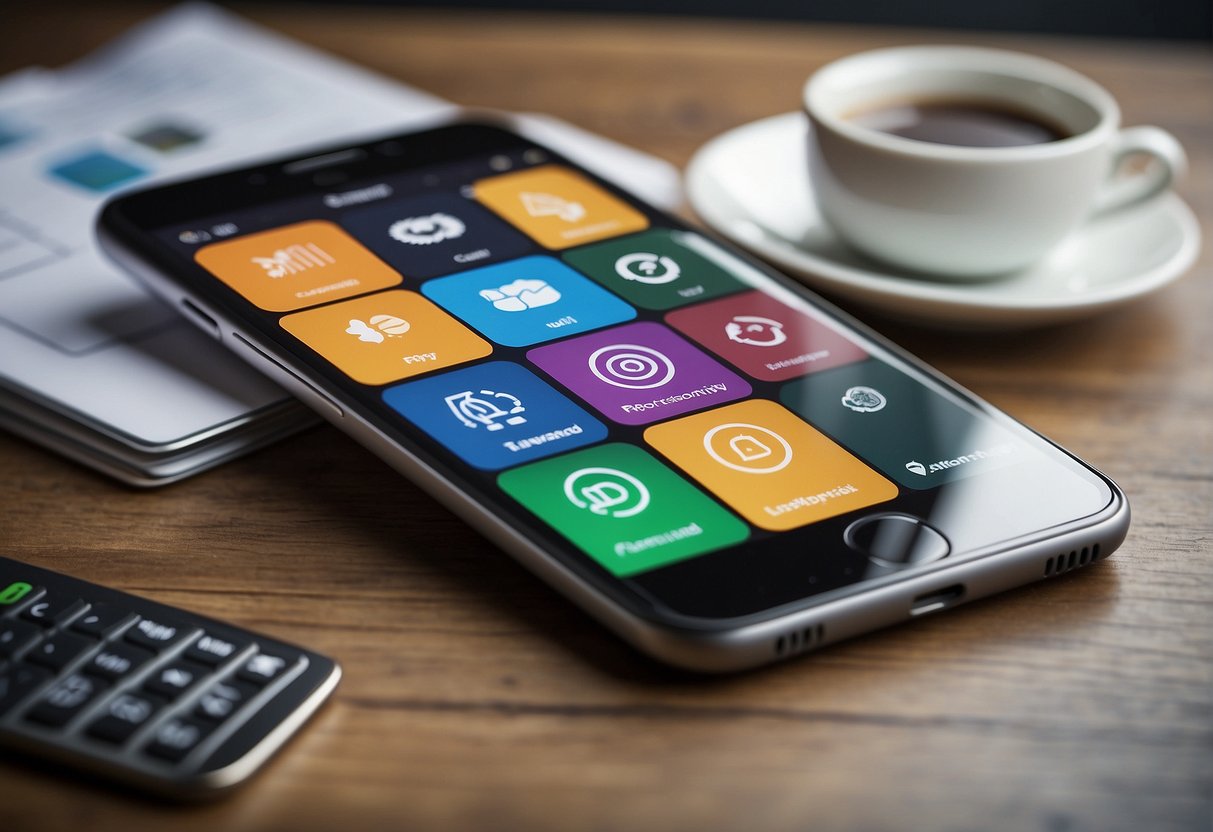
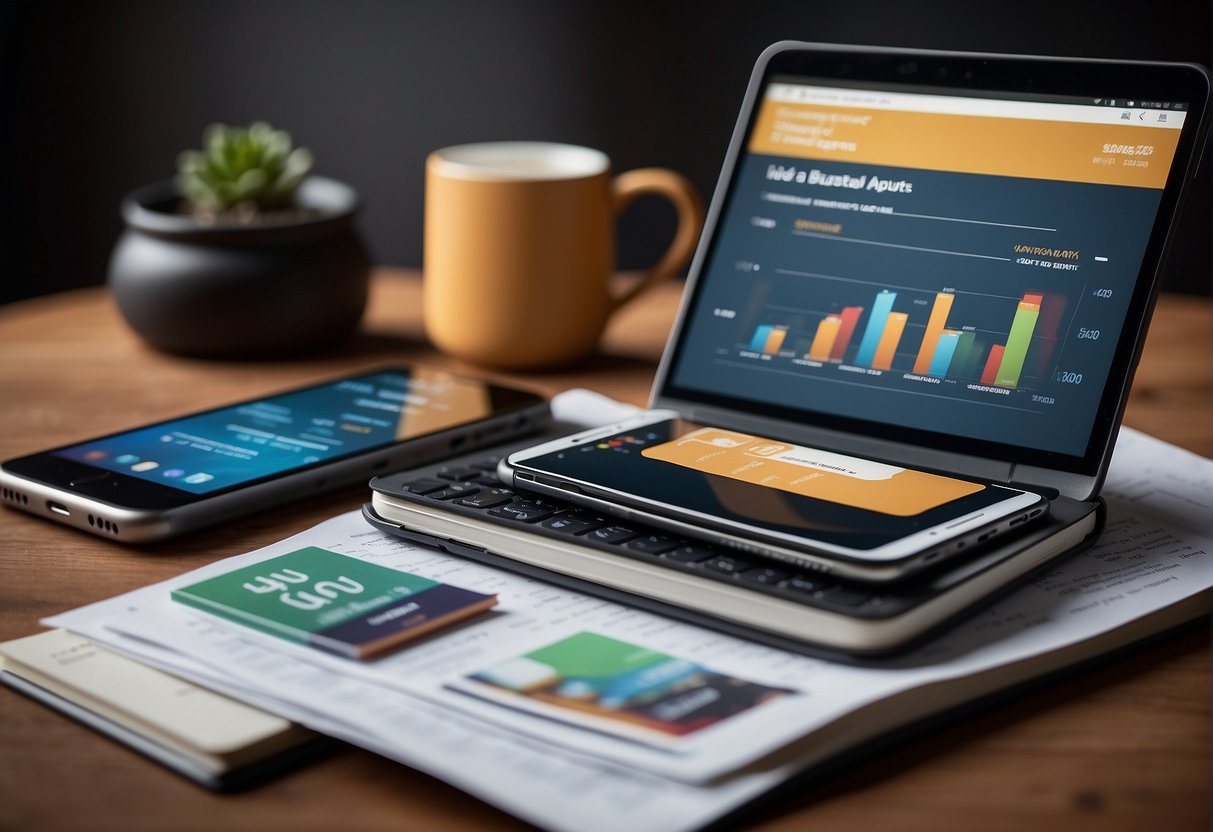
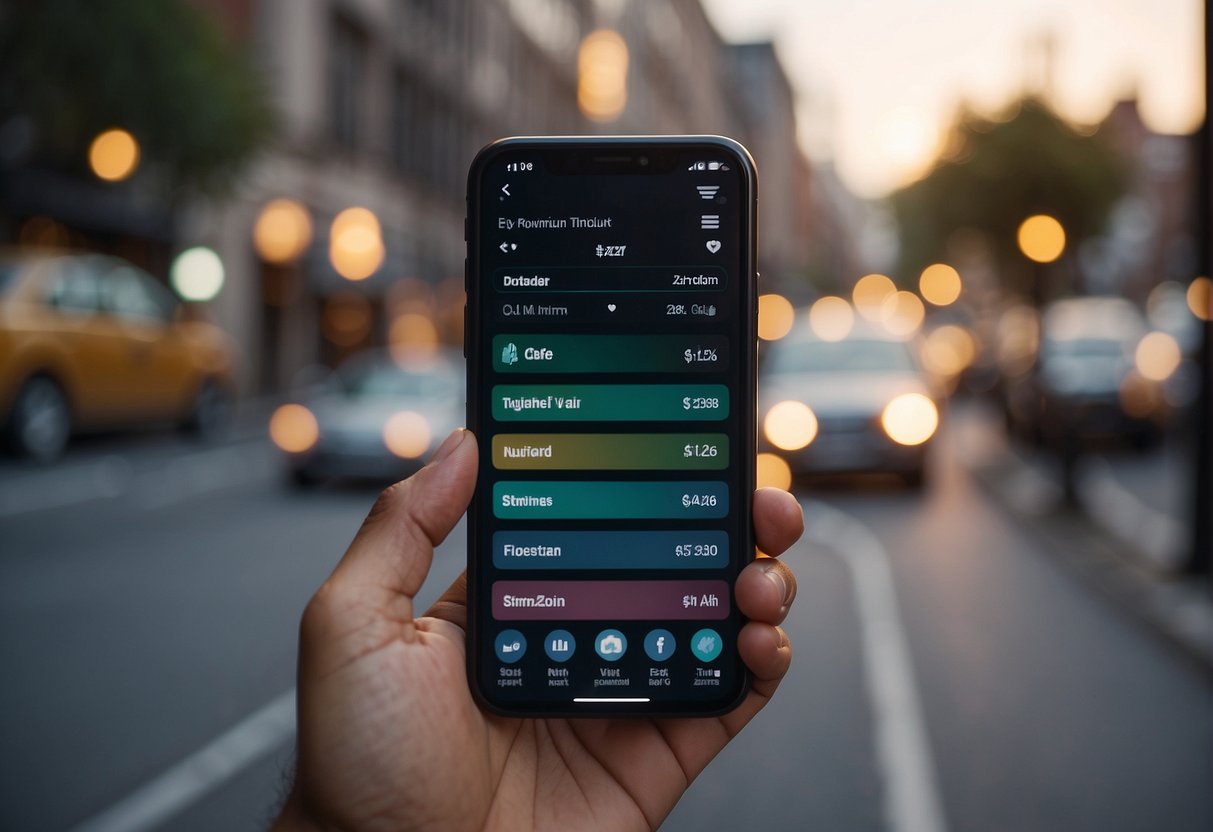
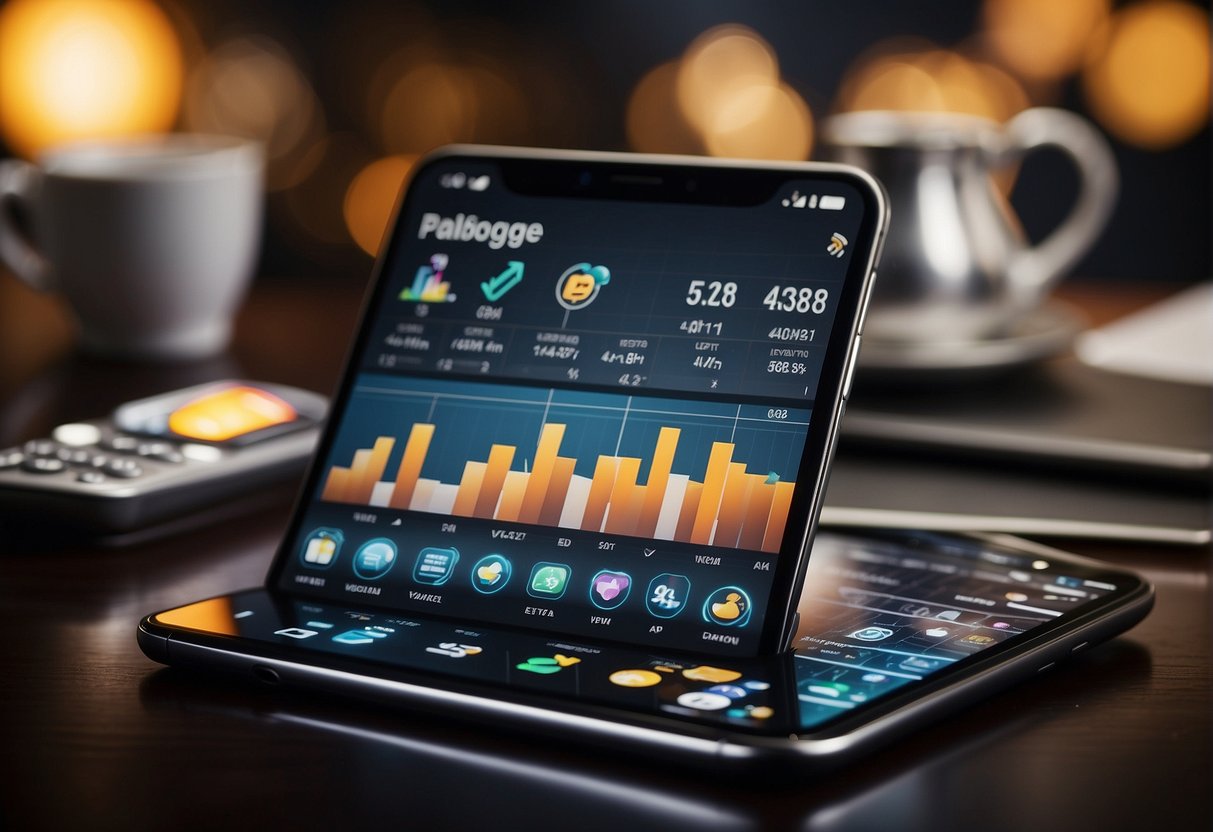
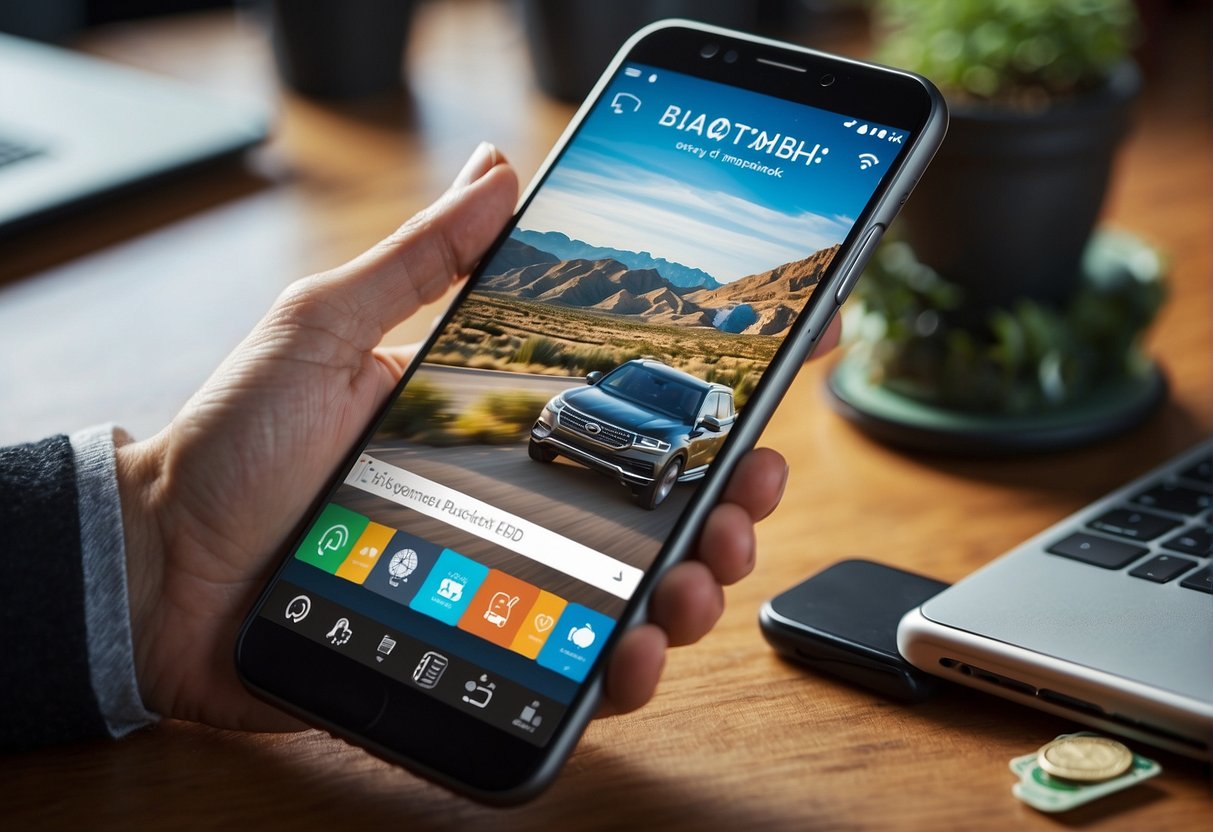

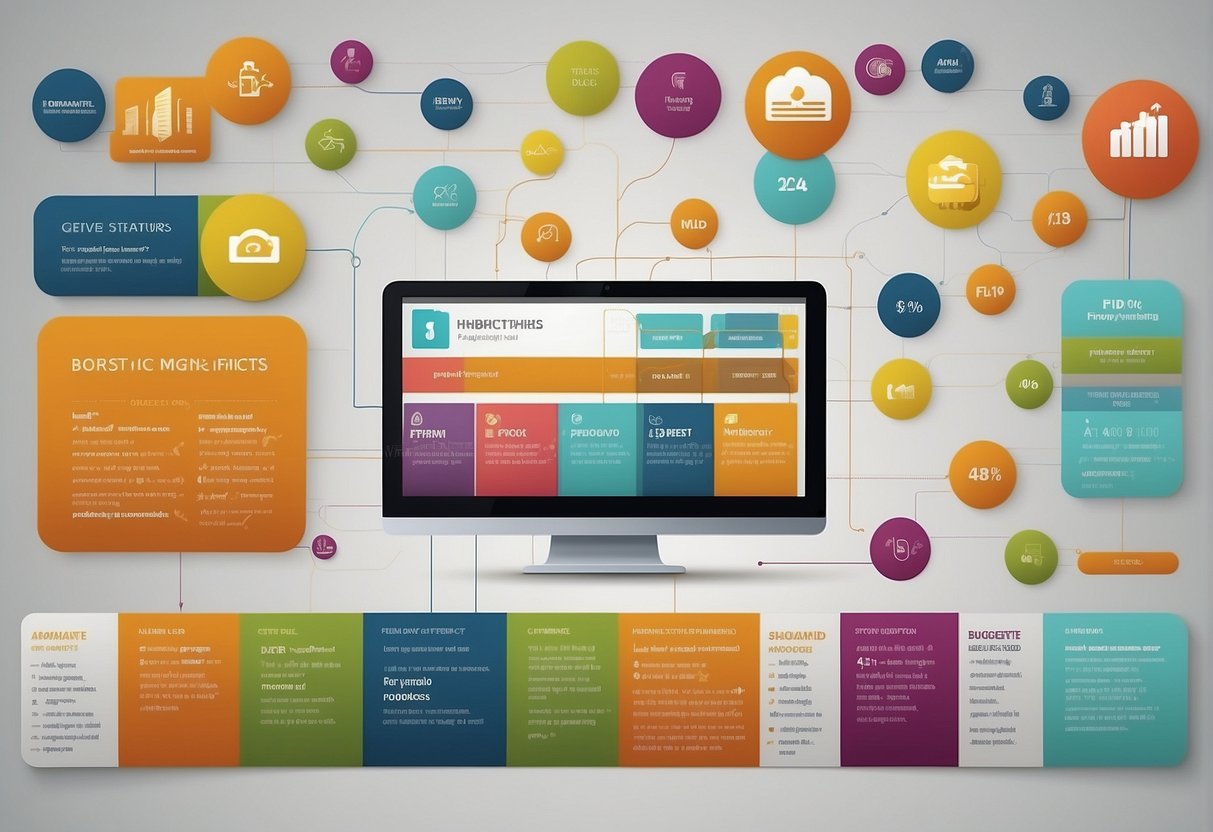
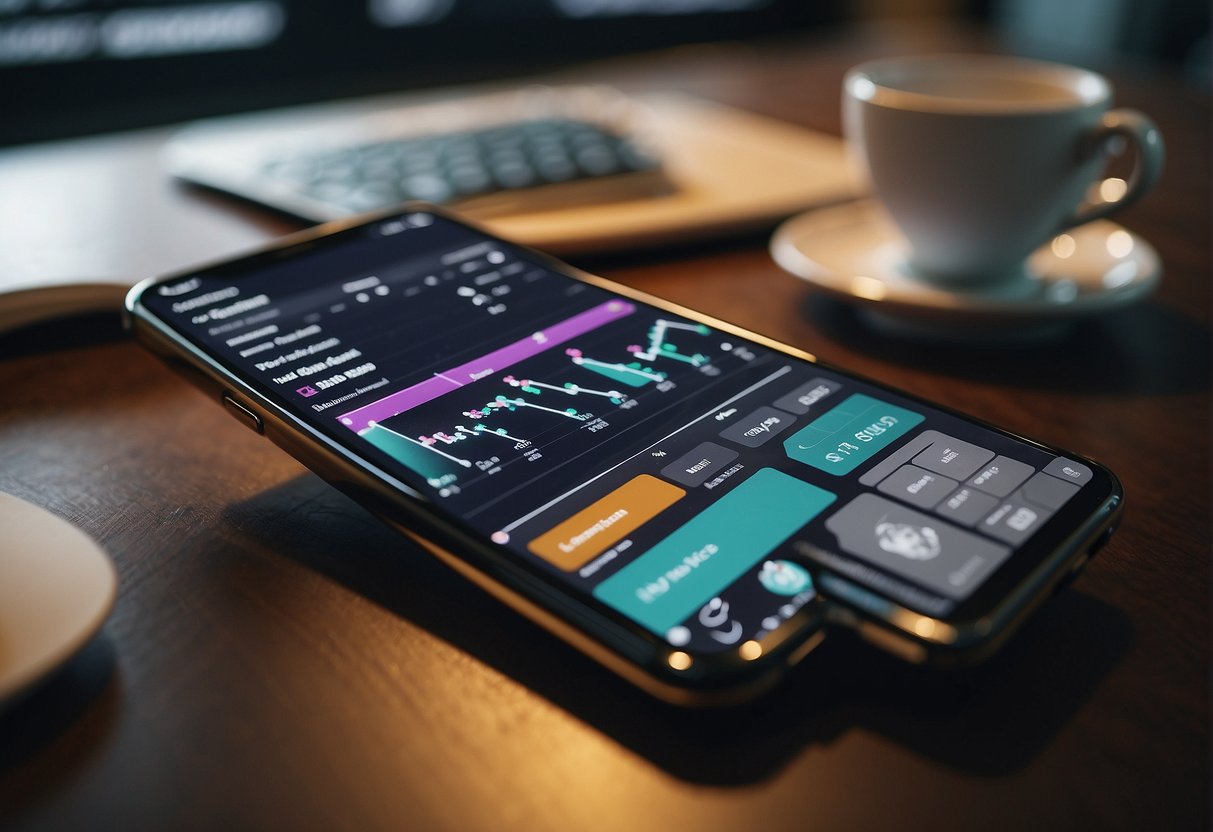
Recent Comments